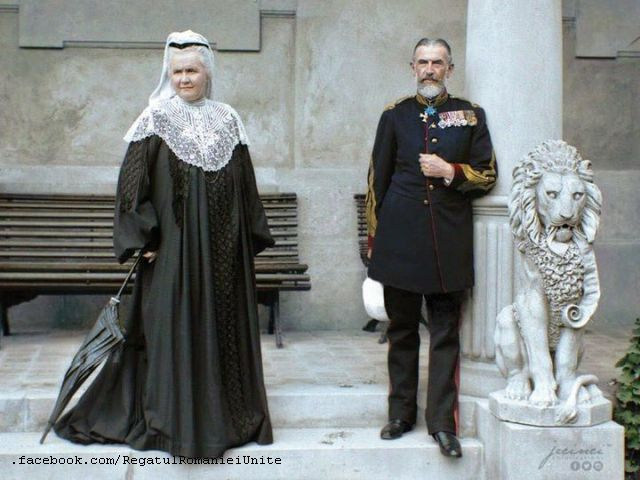Wedded in 1869, King Carol I and Queen Elisabeth, Romanias first royal couple, generally had a calm and warm marriage until the late 1890. Proof in this respect, among other things, is brought by the 2 volumes recently released by Humanitas Publishers, comprising the correspondence exchanged by the two spouses and entitled “With warm love, Elisabeth. Always faithfully yours, Carol.
Born in Neuwied in 1843, Elisabeth sought and managed to encourage artists and arts in her new country. She was in fact keen on literature and writing easily in German, Romanian, French and English using the pen-name Carmen Sylva. It is in arts that she sought refuge after the death of her only child, princess Maria, at the age of 5, in 1874. She would express her need for maternal love years later, in her relationship with one of her ladies in waiting, Elena Văcărescu. Born into an eminent family of local noblemen and scholars and awarded twice by the French Academy for her literary skills, Elena Văcărescu was for a brief period involved in a politically unacceptable romance with Carols adopted nephew, crown prince Ferdinand, the heir to Romanias throne.
This is actually the trigger of the correspondence between the King and the Queen included in the second volume of the book “With warm love, Elisabeth. Always faithfully yours, Carol, as historian Alina Pavelescu tells us:
Alina Pavelescu: “This is the volume where the human dimension of the protagonists is best revealed. Their letters revolve around the scandal prompted by Prince Ferdinands romance with Elena Văcărescu. (…) The affair resulted in Queen Elisabeth being exiled for several years, and most of the correspondence dates back to this exile, a period when her perfect marriage with King Carol I experienced its biggest crisis, perhaps even bigger than the fact that the queen could no longer have children and therefore heirs to the Romanian throne. The King displays a great deal of composure and reason and patience in trying to make her understand what she had done wrong, and in the way he tries to put behind some of the most delicate and potentially unforgivable moments in his relationship with his wife.
But what was the actual story behind Prince Ferdinands engagement to Elena Văcărescu? Romanița Constantinescu, one of the editors of the correspondence volume, explains:
Romanița Constantinescu: “Actually that marriage was not as unlikely as it seems today, and apparently the whole situation was on the edge. Around Easter time in 1890, Ferdinand got engaged to Elena and asked the Kings permission to marry her. Although concerned with the political consequences, the King did not reject the idea out of hand, primarily out of love and respect for the Queen, who encouraged the affair, and for his nephew, the crown prince, as we learn from these letters. He left the decision to his Council of Ministers, and as we know the Council, chaired at the time by general Ioan Emanoil Florescu, did not approve the engagement.
Romanias politicians denied the marriage in order to avoid a prospective competition for influence over the throne between the local noble families related to Elena Văcărescu. Apart from the suffering inflicted on the two lovers, this decision affected Queen Elisabeth as well, who was forced into exile in several European countries, to return to Bucharest only in 1894. Silvia Irina Zimmermann, the other editor of the correspondence volume, tells us more about the Queens exile:
Silvia Zimmermann: “These are not only the letters of a queen, but also the letters of a skilled writer and fine artist. We thought that period had been a bleak time, a break with literature, but the letters tell us something else. Queen Elisabeth spent her exile years in Italy, in Venice and Palanzza, until June 1892, and at her mothers estate in Neuwied until the end of July 1894. In one letter, the Queen tells her husband she was so ill and upset that she lost all inspiration and drive for writing. However, her exile years were particularly productive both in terms of literature and in terms of decorative arts, with some of the most outstanding works still on display in Romanian museums. During these years, Queen Elisabeth worked on 3 poetry volumes and 2 plays, published under the pen-name Carmen Sylva between 1891 and 1893.
Also during those years, the Queen started writing a number of texts which, after her return to Romania, were included in her memoirs and in her fairy tale collections. In other words, Queen Elisabeth was able to convert the trials of her exile into works of art. (tr. A.M. Popescu)

